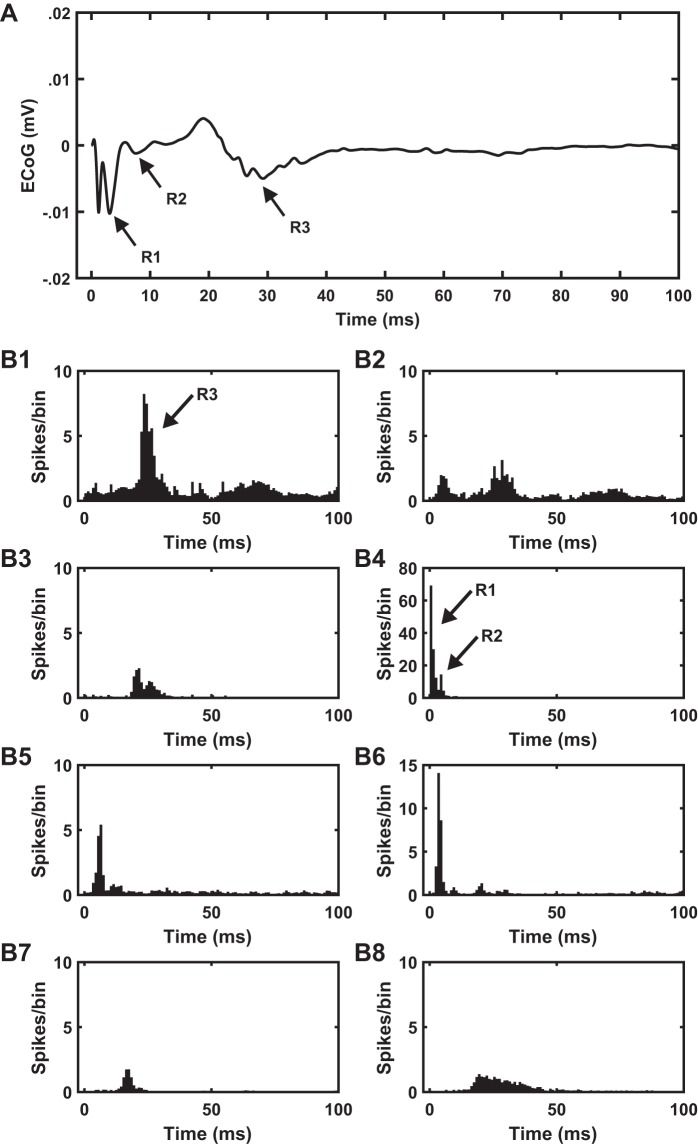Fig. 12.
Model-based identification of the neural origin of cortical evoked potential (cEP) response to subthalamic nucleus (STN) deep brain stimulation (DBS). A and B: electrocorticographic (ECoG) recordings (A) and poststimulus time histograms (B) of underlying layer-specific neural activity evoked by 4.5-Hz STN DBS of 60% of layer 5 (L5) pyramidal cell axons in the computational model. B1: L2/3 pyramidal neurons. B2: L2/3 interneurons. B3: L4 spiny stellate cells. B4: L5 pyramidal neurons. B5: L6 pyramidal neurons. B6: L6 interneurons. B7: thalamocortical relay cells. B8: reticular thalamic nuclei cells. Activation of model L5 pyramidal neurons was coincident with R1 phase. Recurrent activation of L5 pyramidal neurons was coincident with R2 phase, whereas the timing of R3 phase was coincident with the activation of the model L2/3 pyramidal neurons. On the basis of the latency of neural activity in different layers, it can be concluded that the polysynaptic activation of L2/3 pyramidal neurons is through the L5→L5→L6→thalamus→L4→L2/3 pathway.

